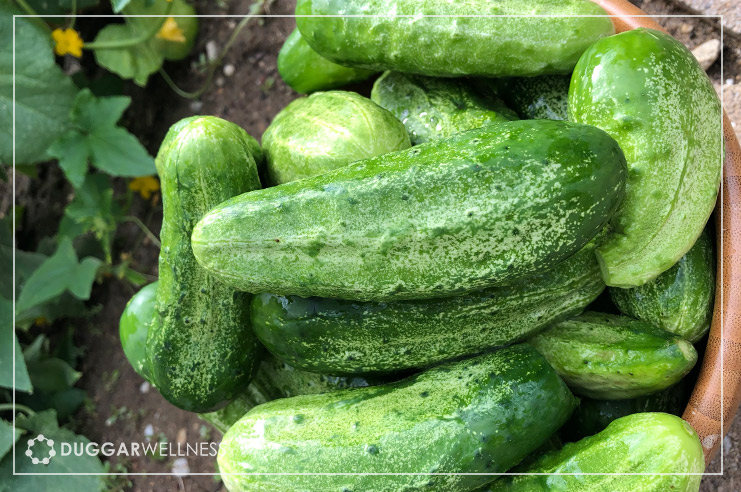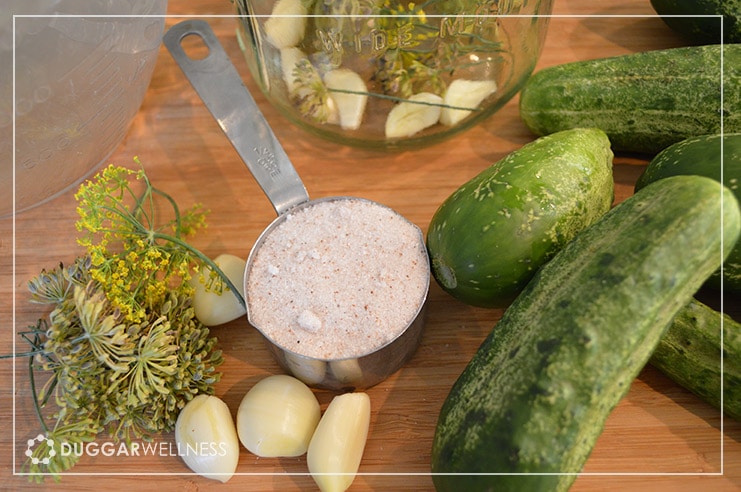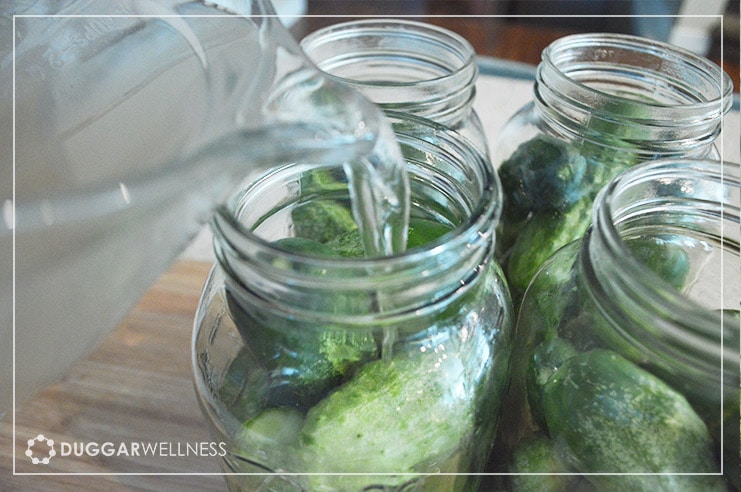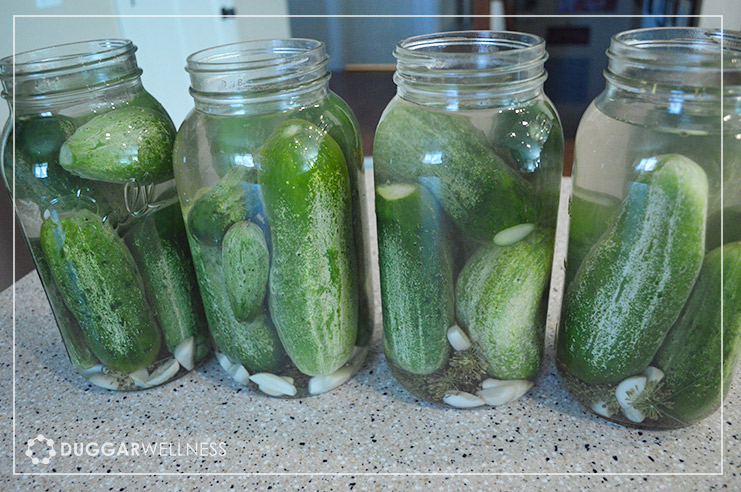Fermented pickles are the real thing when it comes to pickles. These pickles don’t get their sour flavor from vinegar, but they get that sour goodness from time and the help of beneficial bacteria.
These pickles are made with saltwater brine and the anaerobic process (without air) of Lacto fermentation, which means the cucumbers must be fully submerged in order to become pickles. Cucumbers are probably the most finicky vegetable that I’ve tried fermenting, sometimes they work, and sometimes they don’t. If it’s one thing I’ve learned about the fermentation process it is- you really just never know why some batches turn out and others don’t. I guess that’s the nature of working with fresh produce. But don’t let that thought stop you because the end result is amazing, these pickles are amazing!
Begin with fresh pickling cucumbers. These are easy to grow if you love to have your own garden. We usually plant four cucumber pants and have pickles that last us through the winter. You can also find pickling cucumbers at your local farmer’s market.

Now you want to pick the herbs and spices that you want to use. You really only need to use your saltwater brine to make pickles but you’ll get the classic dill flavor by adding in fresh dill, garlic, and some mustard seeds. The possibilities for herbs and spices are only limited by your imagination so get creative! You can spice up your pickles with some red pepper flakes, add more garlic or even throw in a couple of radishes to your batch.

A compound called tannins helps strengthen the pectins in the cucumbers and keep pickles crispy. Tannins are most commonly found in grape leaves but are also found in oak leaves, horseradish leaves, and bay leaves. Because I have grapevines growing in my yard I always add 1 or two grapes leaves to the bottom of my jar. If grape, oak or horseradish leaves aren’t easy for you to find, just use 3-4 bay leaves that you can easily find in the spice section of the grocery store will work.

Make sure all the cucumbers are fully submerged. Any bit of cucumber that comes in contact with the air will begin to get mussy and rot. This will ruin your entire batch.
PrintFermented Pickles
- Author: Tammie Duggar
Ingredients
4 Tbsp. sea salt
1 Quart of water
About 1 pound small pickling cucumbers, generally 1 pound will fit into 1 quart jar.
I handful of fresh dill, 1 Tbsp. dill seeds or 1 tsp. dried dill
1 Tbsp. mustard seed
4–6 cloves garlic, remove paper & slice in half.
Instructions
Prepare your salt-water brine in a seperate container by adding the salt ot 1 quart of water, allow to completely dissolve while you prepare the cucumbers.
It is best to use fresh picked cucumbers, but if that is not possibles just soak cucumbers in cold water for about 30 minutes. This will revive any cucumbers that may be getting a bit wilted or soft.
Gently wash cucumbers and softly brush off any of the little spiky bumps. Cut off the vine and blossom ends, this will help them from tasting bitter.
If using grape, oak, horsraddish or bay leaves place them at the bottom of the jar. (remember these are optional but can help your pickles stay nice and crisp.
Add the dill, mustard seeds and garlic into the jar.
Lay jar on its side and stack cucumbers into the jar. Use small pieces to fill in any gaps. Really pack them in so that they don’t move when you add in the water.
Pour prepared salt-water brine over the cucumbers until they are submerged and jar is just about full. If any part of the cucumbers are not fully submerged they will begin to get mussy and rot. Also look around the sides of the jar and makes sure there are no air bubbles stick between the cucumbers and the glass. Just give the jar a little twist or gently shake and this should loosen those air bubbles and allow them to escape.
Cover jar with lid. Make sure that you loosen the lid daily and give your jar a little twist to allow excess gasses to be released.
Ferment at room temperature for at least 3 days until desired taste and texture is achienved. The brine should turn cloudy and can even be slightly bubbly once the pickles are done.
Eat right away or store in the refigerator for several months.
Serving Suggestion:
Who needs a serving suggestion for a pickle? Just FYI these will not taste like the pickles you find at the grocery store! But they will be even better!
 160 N Main, Bountiful, UT 84010
160 N Main, Bountiful, UT 84010  801-677-7878
801-677-7878

